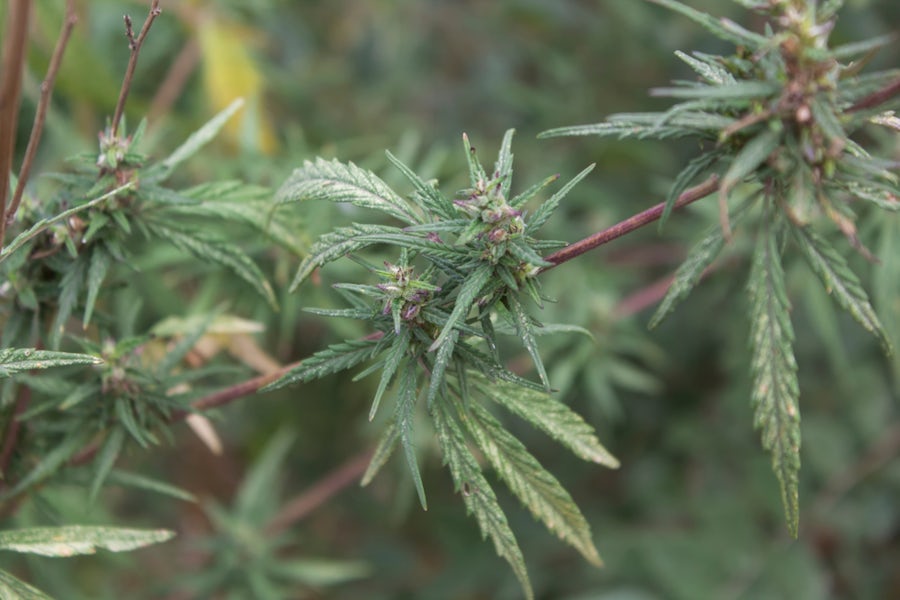This article first appeared in Analytical Cannabis. It is republished here with permission.
From the analysis of ancient pollen, scientists had already previously determined that modern cannabis evolved in Central Asia on the Tibetan Plateau millions of years ago. Now, new research suggests that the plant was actually domesticated for the first time in East Asia, roughly 12,000 years ago.
The research, published last week in the journal “Scientific Advances,” used the whole-genome resequencing of 110 different hemp and drug-type cannabis strains from around the world to study their genetic roots.
In addition to identifying modern-day China as the origin of early cannabis domestication, further study of the strains’ genetics appeared to indicate that this early domestication was multipurpose – early cannabis strains were selectively bred for use in textile production and as an intoxicant.
The researchers say that this discovery provides a unique global view of the domestication of cannabis, and offers valuable new genomic resources for ongoing research into cannabis strain breeding.
Ancestors of modern cannabis are likely to have been first domesticated in Neolithic China
For this new study, the researchers used data from 28 cannabis genomes already publicly available in the literature. Led by Dr Ren Guangpeng, a botanist at Lanzhou University, the researchers also collected samples from a further 82 wild-growing feral plants, landraces, historical cannabis cultivars, and modern hybrid strains from around the world to study their genetic history. These included modern strains from Europe and the Americas that had been selectively bred to produce high levels of THC, and a particular focus on strains thought to originate in central and east Asia.
Research partners at the University of Lausanne, Switzerland, then extracted the genomic DNA from these samples and sequenced them, as well as reanalyzing the 28 already known genomes.
The strains were seen to fall into four well-separated genetic groups: hemp-type, drug-type, drug-type feral, and “Basal” cannabis. These Basal strains were determined to be a “sister to all other Cannabis accessions”, according to the study authors, and as a group consisted mainly of feral plants and landraces from northern China.
“Contrary to a widely accepted view, which associates Cannabis with a Central Asian center of crop domestication […] our results are consistent with a single domestication origin of C. sativa in East Asia, in line with early archaeological evidence,” the researchers write in their paper.
“The results also indicate that some of the current Chinese landraces and feral plants represent the closest descendants of the ancestral gene pool from which hemp and marijuana landraces and cultivars have since derived.”
The researchers point to the discovery of cord-impressed pottery from Taiwan dating from around 12,000 years ago, as well as pottery-associated seeds from Japan around 10,000 years ago, to support this timeline of events.
In terms of future work, the researchers say that additional sampling from feral plants in these key areas of central and east Asia is still needed, although their results would imply that the pure wild progenitors of cannabis have since gone extinct.
What does this mean for the history of cannabis?
In addition to looking at the demographic history of these sample strains, the researchers also carried out a closer examination on the function of the two main cannabinoid synthase genes – CBDAS and THCAS – in these samples. These two genes mediate the biosynthetic reactions responsible for producing cannabidiol (CBD) and THC respectively.
They found that cultivars from the drug-type genetic group almost always mapped a complete coding sequence for THCAS and two CBDAS pseudogenes. It was more common in the hemp-type group to only map a complete sequence for CBDAS, with the exception of nine mostly landrace samples. In contrast, the Basal group – and to a lesser extent the drug-type feral group – showed a much more variable pattern, regarding the presence or co-occurrence of either synthase gene.
The researchers believe that this loss of complete coding THCAS or CBDAS sequences indicates the existence of intensive and selective farming practices for increased fiber production or psychoactive properties, respectively. This would mean that early cannabis plants were already being domesticated specifically for both fibre production and psychoactive use at the dawn of China’s Neolithic period in 10,000 B.C.
Dr Michael Purugganan, a professor of biology at New York University who was not involved in this new research, told the “New York Times” that the study findings challenge the ordinary assumption that early humans were only focussed on domesticating plants for food.
“That seems to be the most pressing problem for humans then: How to get food,” Purugganan said. “The suggestion that even early on they were also very concerned with fiber and even intoxicants is interesting. It would bring to question what were the priorities of these Neolithic societies.”
Purugganan added that he remains somewhat skeptical about how the cannabis plant could have been domesticated for drug or fiber use 12,000 years ago when the first consistent archaeological evidence of cannabis used for those purposes tends to date from around 7,500 years ago in China and Japan. However, he also said that he would welcome “a much larger study with a larger sampling.”
Sign up for bi-weekly updates, packed full of cannabis education, recipes, and tips. Your inbox will love it.

 Shop
Shop Support
Support
















